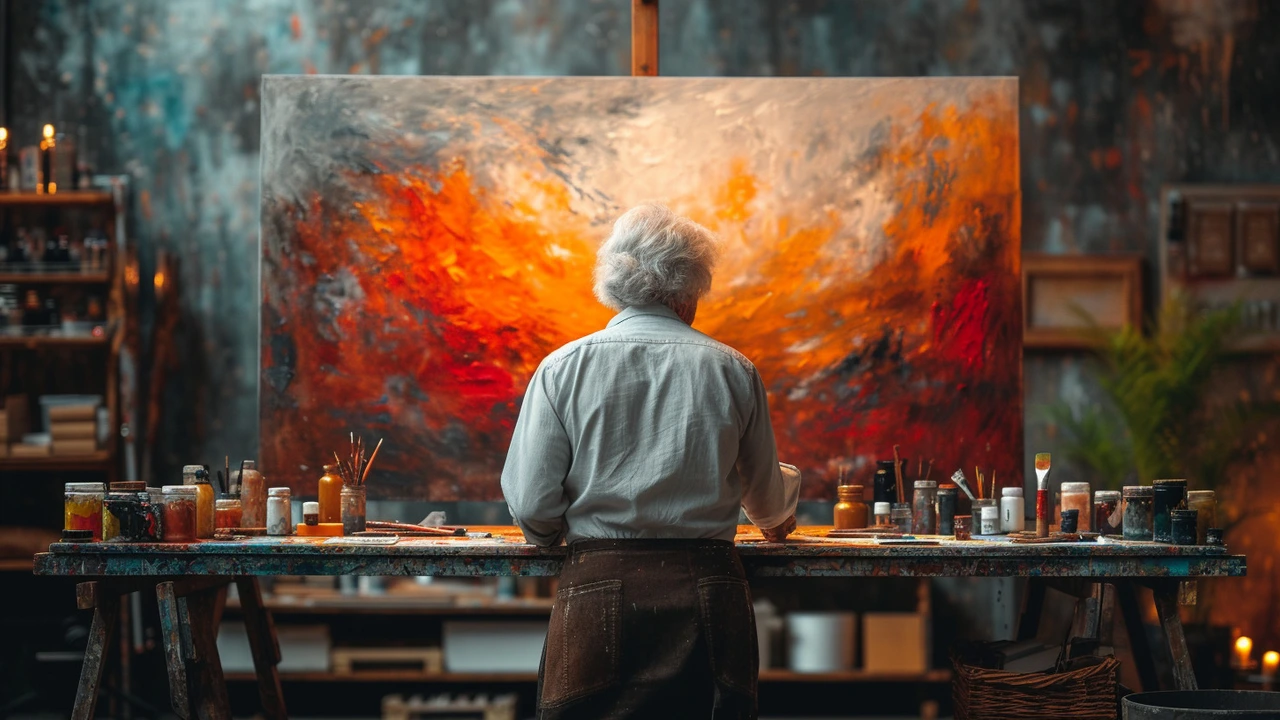
Understanding Creative Arts Therapies
Creative Arts Therapies or CAT, as the cool kids call it, are therapeutic approaches engulfing several creative disciplines such as drama, dance, music, visual arts and writing - almost as thrilling as weekend jamming sessions with my golden retriever, Benny, who plays a mean tambourine. These therapies use an integrative approach by incorporating the creative process and the bond between therapist and patient to foster expression, understanding, and emotional healing. Sounds funky, right? Besides, who wouldn’t love to shake a leg or draw some stick figures in the name of therapy?
Studies show that CAT can help alleviate a wide range of mental health problems such as depression, anxiety, trauma and even social and emotional difficulties in children and teenagers. In particular, it pays to note that not a single colour pencil, drama mask, guitar string, or dance shoe has ever carried any judgement or stigma.
The Power of Music Therapy
Music therapy, a form of CAT, uses the power of rhythm and melody to help folks tap into their feelings in a non-verbal way. Picture this, you're jamming to your favourite tune and all of a sudden, it feels like the artist looked inside your soul and wrote a song about it. For those, like me, who have trouble putting emotions into words, that's what music therapy offers. This therapy lets you express your emotions without even uttering a single word!
Just a while back, I recall my emotional state living through the coronavirus pandemic. The stress, the anxiety, the uncertainty; it just piled up. So, I hit the drums in a primal percussive expression that honestly felt like a release valve was opened on a pent-up pressure cooker. Turns out, I was intuiting some personal music therapy.
Dance/Movement Therapy: Let’s Groove
Meanwhile, dance or movement therapy has the capacity to bring together mind and body in a rhythmical way. It's not about burning the dance floor or pliéing like a pro, but rather the focus is on movement expression. Think of it as a non-verbal language helping to communicate emotional and mental state through the medium of dance and movement.
Now, don’t imagine you need to pull off incredible moves like those folks in the Step Up movies, alright? After all, many therapists refer to dance therapy as a “safety net” of support for their clients. Heck, any physical gesticulation can serve as an emissary into the realm of unexpressed feelings.
Drama Therapy: All but a Stage
Drama therapy, on the other hand, incorporates role-play, improvisation, stories, metaphor and masks, as tools for self-expression and examination. Participating in a play or drama isn't just a way of creating art, but a unique means of exploring personal conflicts, traumas and emotions, just like delineating different facets of experience, even different "roles" we play in our lives.
Remember folks, drama therapy does not mean you must be a Marlon Brando or Meryl Streep to gain from it. It all comes down to letting your emotions out and finding resolution while playing out different characters and scenarios. Consider it a psychodrama, and a fun one at that!
Art Therapy: Paint Your Worries Away
Art therapy simply isn't art class. Sure, there's plenty of drawing, painting, sculpting and whatnot, but there's also immeasurable potential for mental health betterment. It isn't about creating a masterpiece, but about allowing your inner thoughts and feelings to take a physical form. Practised just about worldwide, with promising results, it's a great way to depict your feelings by drowning them in colours.
Back when I was a kid, I remember my favourite teddy bear got totally chewed up by a neighbourhood dog. I was so upset, I drew dozens of pictures of the event. Art therapy wasn't a "thing" back then, but that's exactly what I was unknowingly doing to help cope with a childhood trauma.
Writing Therapy: Journaling to Joy
Writing is one of the oldest forms of self-expression and communication. Over time, it has evolved into a therapeutic tool to explore one's inner thoughts, feelings, fears, dreams, and emotions. In writing therapy, you put your thoughts and feelings into written words, often in a guided and structured manner.
For years, before I started blogging professionally, I used to write personal journals. At times, it was heartbreaking to read what I wrote when I experienced low points in the past. But these written expressions, looking back, were cathartic and therapeutic.
The Pivotal Role of Therapists in CAT
Therapists play an essential role in all types of creative arts therapies. While the creation's part might be all fun and games, therapists are there to guide, make sense and interpret the underlying emotions conveyed through the art.
Remember, CAT therapists aren't just folks who love arts and decided to make it a profession. They are highly skilled professionals, often holding Master's degrees, who are trained to understand human psychology, mental health disorders, therapeutic practices and of course, art. They may not have no. 1 hits on Spotify or Oscars on their mantelpieces, but they are rockstars in their own right.
Building Bridges Toward Better Mental Health
When it comes to mental health, there are no one-size-fits all solutions. It’s crucial to understand that what might work wonders for some might not be the ideal solution for others, not even if it works for your golden retriever. Although traditional therapies do have proven benefits, exploring alternatives such as creative arts therapies can help create new paths to healing and emotional wellbeing.
So next time you’re feeling down, don’t hesitate to grab your brush, put on your dancing shoes, tune up your guitar or start a powerful monologue. Your mental health matters and your wellbeing is well worth the effort, let me assure you of that.





